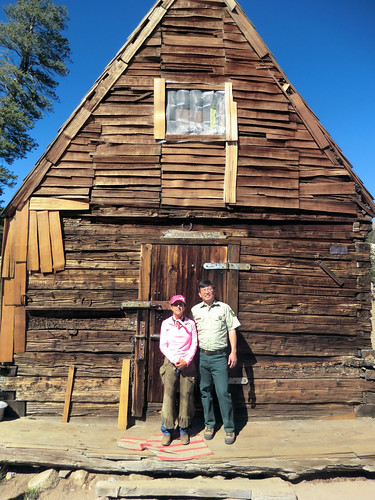
The often-forgotten footprints of Chinese immigrant laborers cover the floor of America’s national forests, railroads and mines. These laborers left behind physical and cultural remnants of the past woven into the fabric of our country.
The U.S. Forest Service is partnering with The Chinese American Historical Society and others to ensure the legacy of these early American immigrants is long remembered. The partnership is working on a website scheduled to launch in April 2016 that will highlight more than 50 Chinese heritage sites with self-guided tour information for destinations in California and Nevada. The partnership goal is to schedule guided tours during the summer of 2016 in both states.
“Traces of Chinese history, long forgotten by many, can be found within the present day boundary of the Stanislaus National Forest,” said Lisa DeHart, a Forest Service archaeologist in California. “Chinese laborers contributed to building portions of the Columbia and Stanislaus Miners Ditch, segments of the Westside Lumber Companies railroad grade and the Big Gap Flume.
“However, few people are aware that Chinese men also were cowboys, as evidenced by the Chinese names left behind on the wall of the 1875 Cooper Cabin, a high-elevation range cabin in the Emigrant Wilderness.”
The retelling of these stories is important because their existence during the mid- to late-1800s often solicited hatred. Newspaper articles focused more on describing Chinese as foreign threats to the American workforce and editorial cartoons were often racist.
In reality, many Chinese immigrants were driven from mining camps and eventually Chinatowns through intimidation, arson, violence and murder. Those who managed to survive were either returned to China or moved into larger cities.
But the evidence of their hard work and dedicated contributions remain scattered across the physical landscape, in documents deep in the recesses of local historical societies and in government records.
Through our research on the Stanislaus and other forests, we have found many interesting historical sites that highlight Chinese-American contributions to developing of the west. Those examples include what many would suspect: railroad tunnels, railroad and road grades, water ditches and tunnels, flumes, stone walls and corrals, battlefields, agriculture, wine cellars, lumber camps, mining camps, Chinatowns, businesses, temples, and more.
The wooden Big Gap suspension flume is an example of incredible engineering for 1859. It towered 25 stories high and spanned almost a half-mile across and brought water to the mines, ranges and farms of the surrounding communities. Only documentation remains of the flume, which rotted and was replaced by the end of that century.
Hundreds of miles of stone walls built by Chinese stone masons also attest to their industry. The walls snaked through the foothills of the Sierra Nevada and were used to manage cattle on Quick Ranch in Mariposa County in the mid-1800s.
The Forest Service and other government and non-government agencies are remembering the past and the nation’s rich historic and cultural heritage as part of Preservation50, a three-year celebration of the enactment of the National Historic Preservation Act of 1966.
The Act made the federal government a full partner and a leader in historic preservation. The Forest Service program, Windows on the Past, will explore some of the more than 370,000 recorded cultural sites on the agency’s national forests and grasslands.

